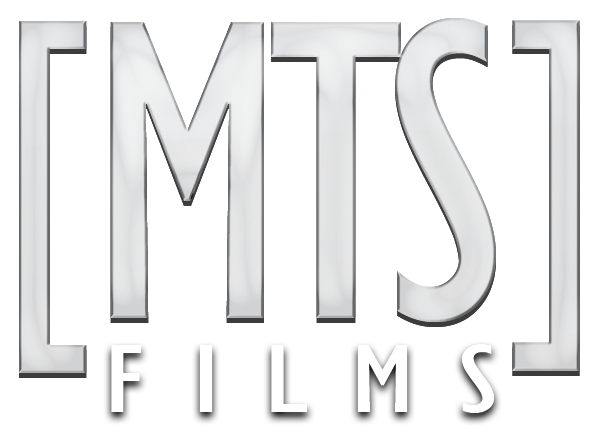ABOVE: Ben Mcnamara, lead actor in The Parting Gift, always bringing his A-Game, which is game changing. He's awesome!
I've shot green screen before, but it's never been this intense or important that I get it right. When Chris contacted me asking if I'd be interested in shooting his next film "The Parting Gift", ENTIRELY on green screen, I jumped at the opportunity with excitement :)
I'll never forget the day that I stumbled across a chroma key tutorial at Creative Cow almost a decade ago, in which (my hero) Andrew Kramer taught me all about spill suppression and how to create a nice key. I shot my very first chroma key test with my brand new (at the time) Sony Z1 and boy did I learn a lot about the importance of compression, chroma sampling and why I need a true progressive camera. Since then I've been required to light and shoot insert shots for various films and music videos over the years, but often they were a static camera where the shot might only last for a few seconds on screen, if that.
Above: A chroma key shot for the music video "Ain't That A Bitch" by Twelve Foot Ninjas
The green screen requirements for The Parting Gift were completely different, and much more challenging. For one, it wasn't just a few seconds, it was an entire film, and two, they weren't just static shots...in fact, Chris was clear from the beginning that every shoot would incorporate some sort of camera movement...dollying, pushing, tracking, booming, you name it! Fortunately, visualizing what Chris wanted was easy because he had already completely animated the entire film in 3D, in addition to the stunning story boards you see here.
Having a super clear picture of what Chris was going for creatively, I then had to make sure that the technical aspects were covered. How much light would be needed to light the chroma key adequately? How much and what sort of light would I need to light the scene and actors? How much space would we need to move and position a 13ft Jimmy jib and a new York taxi?
The space we had wasn't glamorous, but with some clever heads and hands, we knew could make it work (or at least give it a decent crack). A few test shots and it was game on! Once again, Chris' 3D model came in handy because it was actually to scale...so awesome :) Moving and positioning the jib without interfering with the space or casting shadows wasn't easy! Luckily we had the help of talented and technical, Luke Skilbeck (jib owner/operator) and his awesome crew who were able take the lead in that department. The smooth and fluid motion you'll see later below is a result of Luke controlling the jib and sometimes Chris at the front controlling the head.
Lighting the film was a massive challenge. My usual approach is to visit the shooting location, take a look at what light is already there and enhance it while staying true to the tone of the film and the scene at hand. Since there were no locations to visit, and no pre-existing light sources to enhance, I had to really get into a different head space and think about where light would be coming from. Let's not forget that I also had to light and expose a usable green background behind every shot and on top of that, I had to think about motion tracking markers, parallax issues and depth of field.
My first goal was to sufficiently light the chroma key BG. Our budget was tight, so 4 x 4Bank Kinoflows with daylight balanced tubes would have to do. Lighting for the actors had to be flexible, powerful and preferably daylight balanced (so as to keep noise levels to a minimum). Some scenes were at night, others at sunset and some in the middle of the day.
Lighting kit (hired from LITEMUP in Melbourne)
4 x Kino Flow (daylight balanced tubes)
2 x 2.5k HMI
2 x 575w HMI
3 x 1000 LED panels (daylight balanced)
2 x 650w Tungsten Fresnels
2 x 300w Tungsten Fresnels
Working with Dan von Czarnecki (best gaffer in the biz) was a pleasure :) With the time pressure we had, Dan's quick, creative and problem solving mind got us over the edge. Dan has gaffed for me a few times now and I highly recommend him :)
I mentioned depth of field a second ago, and for this particular project it was super important. Using a shallow depth of field is a great way to separate foreground and background, helping guide your viewer to where you want them to look. Unfortunately for this shoot I didn't have that luxury because keeping tracking markers relatively sharp was crucial for the tracking software to work.
With the light levels I had the budget for, my exposure would be sitting around f4 at best (taking into account the light loss I had because of the polarizer). On a super 35mm sensor (1.6x crop) rated at 800iso, I was pushing exposure. Normally that doesn't really worry me, but for this shoot I had to keep in mind that the shot wouldn't work if the key wasn't clean. I was often right on the edge....
With all of these challenges at hand, what really made the difference was not only Chris's genius pre-production, but the actors who were able to put themselves in a world that did not yet exist. Eye lines, screen space and reacting to things that weren't there...I was amazed by the talent and professionalism we had on set. I've worked with Ben Macnamara (lead) before, but never in this capacity. What an absolute legend!
Check out a compilation of my favorite shots, pre-keyed....
A private screening for the cast and crew happens later this month and the film will be released publicly, shortly after that :) Stay tuned! We're all very excited :)








